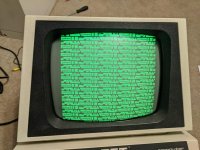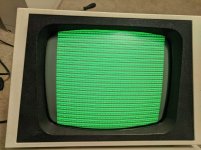twistedpneumatic
Experienced Member
Yes I am using pettest2. Also the time to initialize the CRT is like very exact. It is the exact same period of time, every time. I'm inclined to believe this isn't an error, though I could be wrong.
I really don't think anything is wrong with the HSYNC or VSYNC output. Of course I can try to measure it with my Arduino anyway, as that's the only tool I have right now. Also, even if HSYNC and VSYNC weren't okay, I would still expect to see a picture on the display, even if its a garbled mess.
I really don't think anything is wrong with the HSYNC or VSYNC output. Of course I can try to measure it with my Arduino anyway, as that's the only tool I have right now. Also, even if HSYNC and VSYNC weren't okay, I would still expect to see a picture on the display, even if its a garbled mess.


